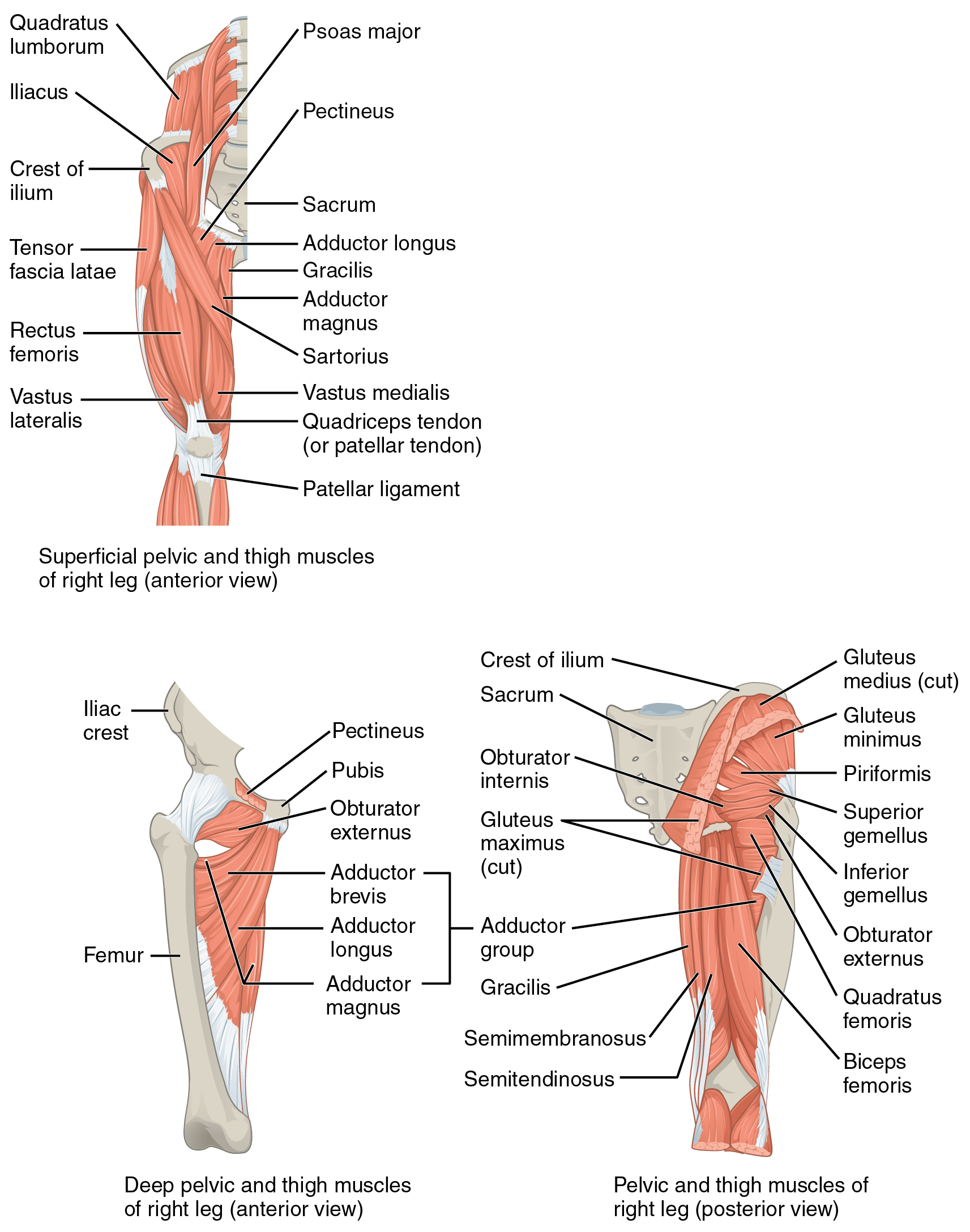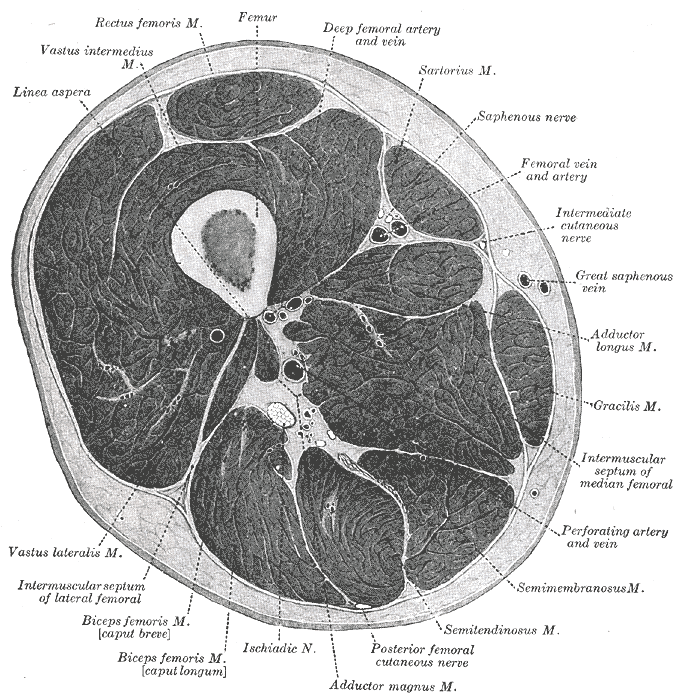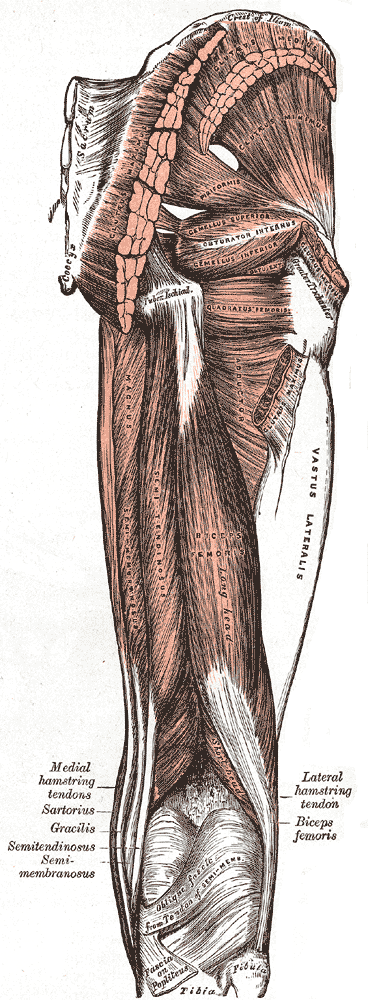Sartorius Muscle
| Muscle | Origin | Insertion | Innervation | Action |
|---|---|---|---|---|
| Sartorius | ASIS | Pes anserine | Femoral n. L2 - L3 |
Hip: Flexion, ER, Abduction Knee: Flexion, IR |
Overview
The Sartorius comes from latin sartor meaning “tailor” since it moves the leg into the cross-legged sitting position a tailor would use when sewing ( hip abduction, external rotation, and flexion)4,6.
The sartorius is the longest muscle in the body4,6.
The sartorius is a fusiform muscle4.
Origin
Insertion
Medial to the Tibial Tuberosity via the Pes Anserine tendon7
Nerve
Femoral N. (L2, L3)7
Action
The sartorius muscle acts primarily as a hip flexor8.
Palpation
Supine6
Ipsilateral foot resting on the opposite knee6
Ipsilateral hip in flexion, external rotation and slight abduction6.
Place hand along the middle of the medial thigh6.
Instruct the patient to contract the sartorius (raise their knee toward the ceiling)6.
“strum” your fingers across the sartorius
Follow the muscle from its superior-lateral origin distally to its inferior-medial insertion6.
Ask the patient to relax
Continue to palpate
Note how the sartorius curves from the ASIS to the medial side of the thigh
Width
- The sartorius and gracilis are slender muscles, especially when compared to the quadriceps6.
- The muscle belly of the sartorius should be “2 fingers” wide and superficial6.
Depth
The sartorius should be superficial since it runs above the quadriceps and other muscles of the thigh.
Position
If you are palpating the sartorius, you will be medial to the vastus medialis muscle belly6.
Direction
The sartorius and gracilis both insert on the common tendon of the Pes Anserine, causing it to be difficult to differentiate between these two muscles distally.
The best way to differentiate between these two muscles is to follow the direction of their muscle belly proximally.
Muscle length test (MLT)
- Thomas test
- The Sartorius can be biased by manually internally rotating the hip during the Thomas test.



